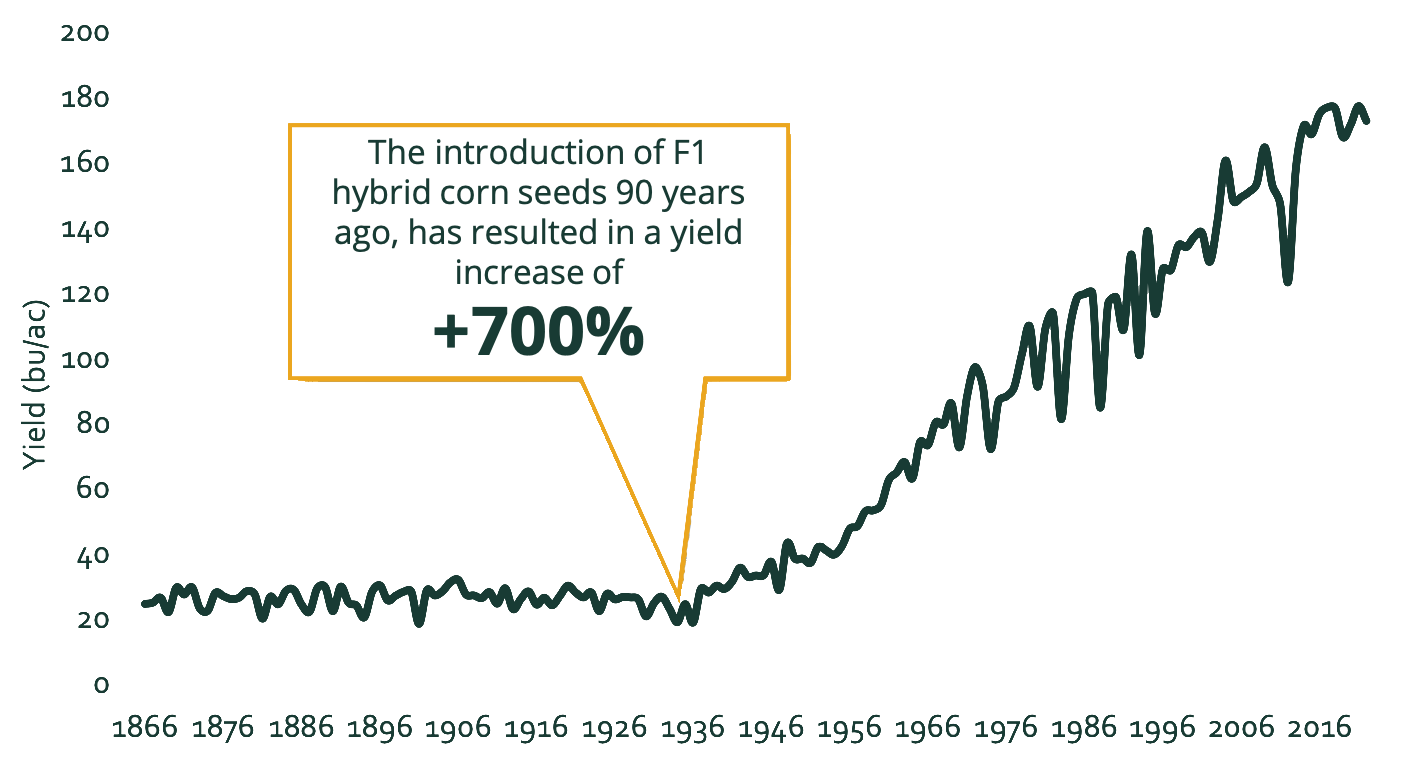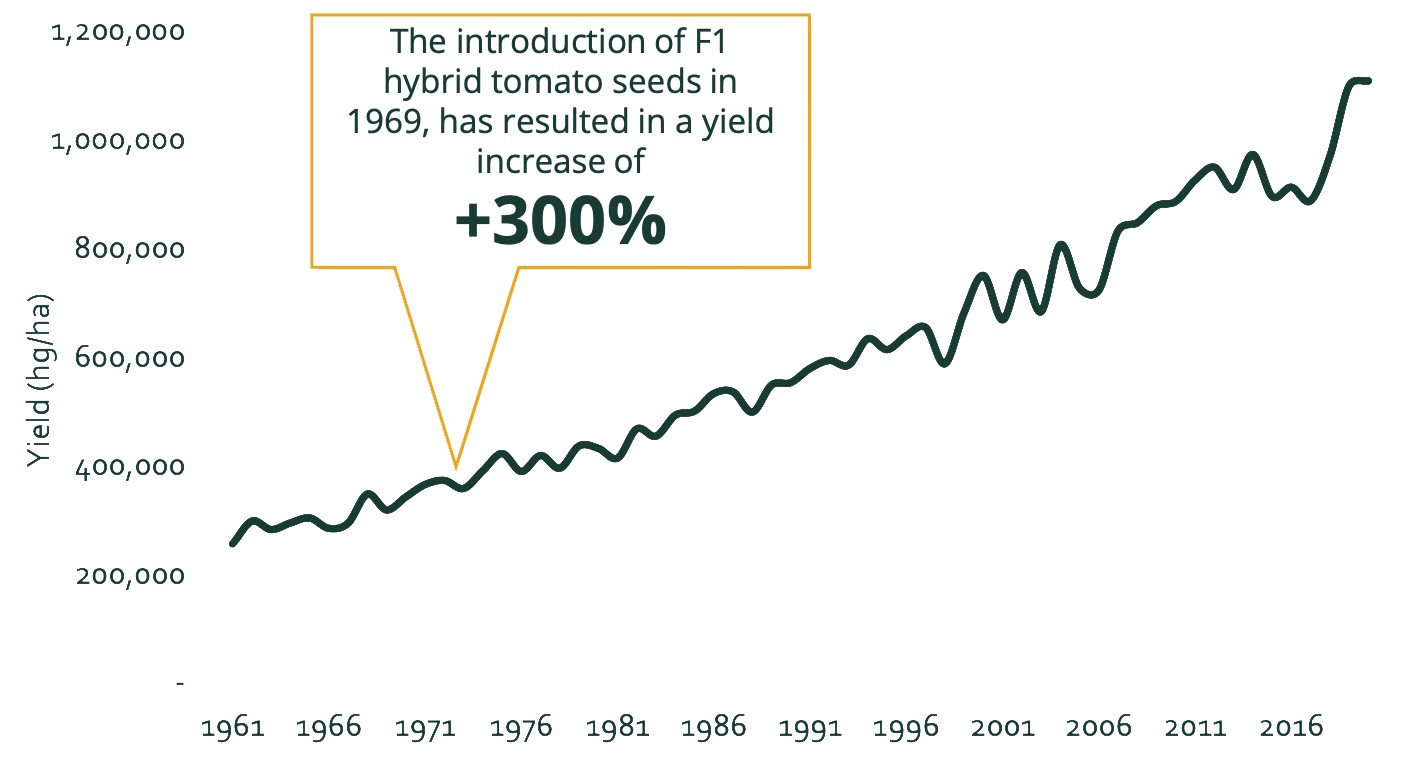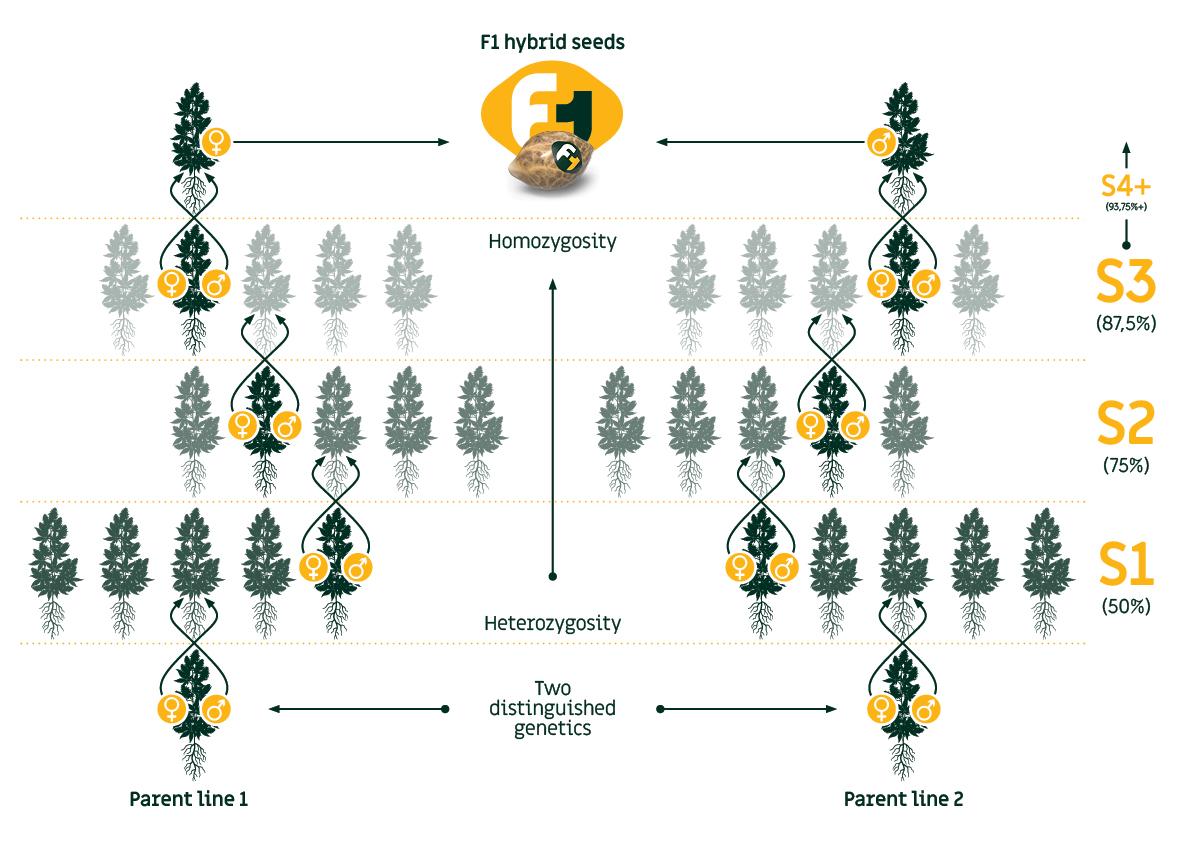How F1 Hybrids Work
F1 hybrid cannabis breeding represents a technology to improve certain plant characteristics. The concept of F1 breeding is based on crossing two homozygous parent lines. Those homozygous lines are fixed on the most important characteristics and reside in two different gene pools.
F1 hybrids have already proven their worth in high-performing vegetable crops such as corn, sugar beet, tomato, pepper, and cucumber. The well-documented advantages of F1 seeds have made them the preferred starting material for the agricultural industry.
Benefits of F1 hybrids include:

Increased yields

Proven focus on specific traits, including resistance

Increased labor efficiency

Stable and uniform genetics

Enhanced plant vigor
The analogy
A prime example of F1 hybrid superiority is F1 corn and F1 tomato varieties. Historical US corn and tomato yield data illustrate the tremendous impact of improved crop genetics.
Data from the annual USDA-NASS Crop Production Report shows that F1 hybrid corn yields have increased by over 500% since their introduction.
Case study – Corn in the U.S.

Case study – Tomatoes in the U.S.

Methodology
Understanding Homozygous & Heterozygous Genetics
Creating proven winners requires a profound understanding of homozygous and heterozygous genetics. To create F1 hybrids, one can achieve this by crossing the inbred parent lines of two specific plant varieties.
Zygosity denotes the degree of allele similarity of a particular gene. If the alleles for a gene on a chromosome pair are the same, it results in a fixed gene. In a homozygote line, all alleles of each gene are identical, thus making the line fixed.
On the other hand, a heterozygote line consists of different alleles. Within this context, there are dominant alleles that exhibit activity, and recessive alleles that only show activity when dominant alleles are absent.
Homozygosity occurs due to multiple cycles of self-fertilization, leading to inbreeding and a reduction in genetic variation.

Crossing two homozygous parent lines results in a heterozygous offspring, which usually leads to enhanced uniformity, stronger and more resilient plant growth, and higher yields. This phenomenon whereby the first generation outperforms its parents is designated ‘heterosis’ or ‘hybrid vigour’.
How We Make F1 Hybrid Parental Lines
Making homozygote parental lines is created by selfing and (back)crossing. However, this is not as easy as it sounds with all crops. The preferred breeding system is largely determined by the mating system of a crop.
Breeding could easily be applied to a self-pollinator as the tomato crop. The Cannabis crop is a cross-pollinator, and therefore it often prevents itself from self-fertilization. By cross-pollination, a cross is made between different genotypes resulting in a genetically diverse/segregating and highly heterozygous crop.
Therefore, the development of cannabis inbred lines poses a great challenge. Parent lines are weak and sometimes too weak to support commercial seed production.

Breeding roadmap
Developing industry-leading F1 hybrids is a meticulous process that takes time. From isolating plant uniformity to increasing yields by up to 50%, our journey to transform the global cannabis industry is only just beginning.

Utilising the Latest Technologies

E-Brida
F1 SeedTech uses the professional breeding software E-Brida. E-Brida features extensive data registration and analysis options, while also allowing centralised data recording in the field. Combined with central storage for phenotyping and traceability, it’s the premier option for cannabis breeding.
Learn more here

